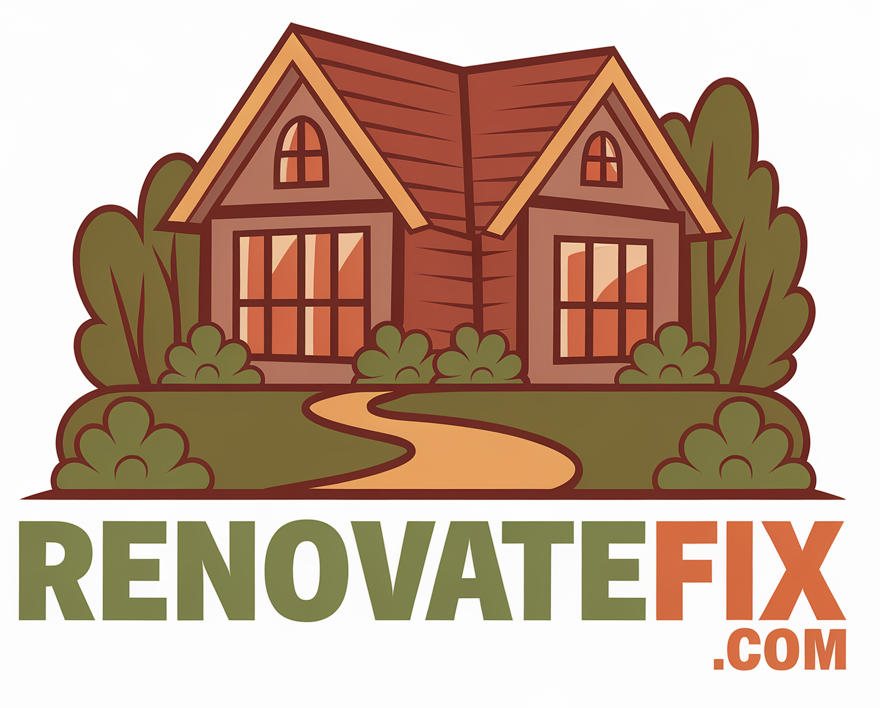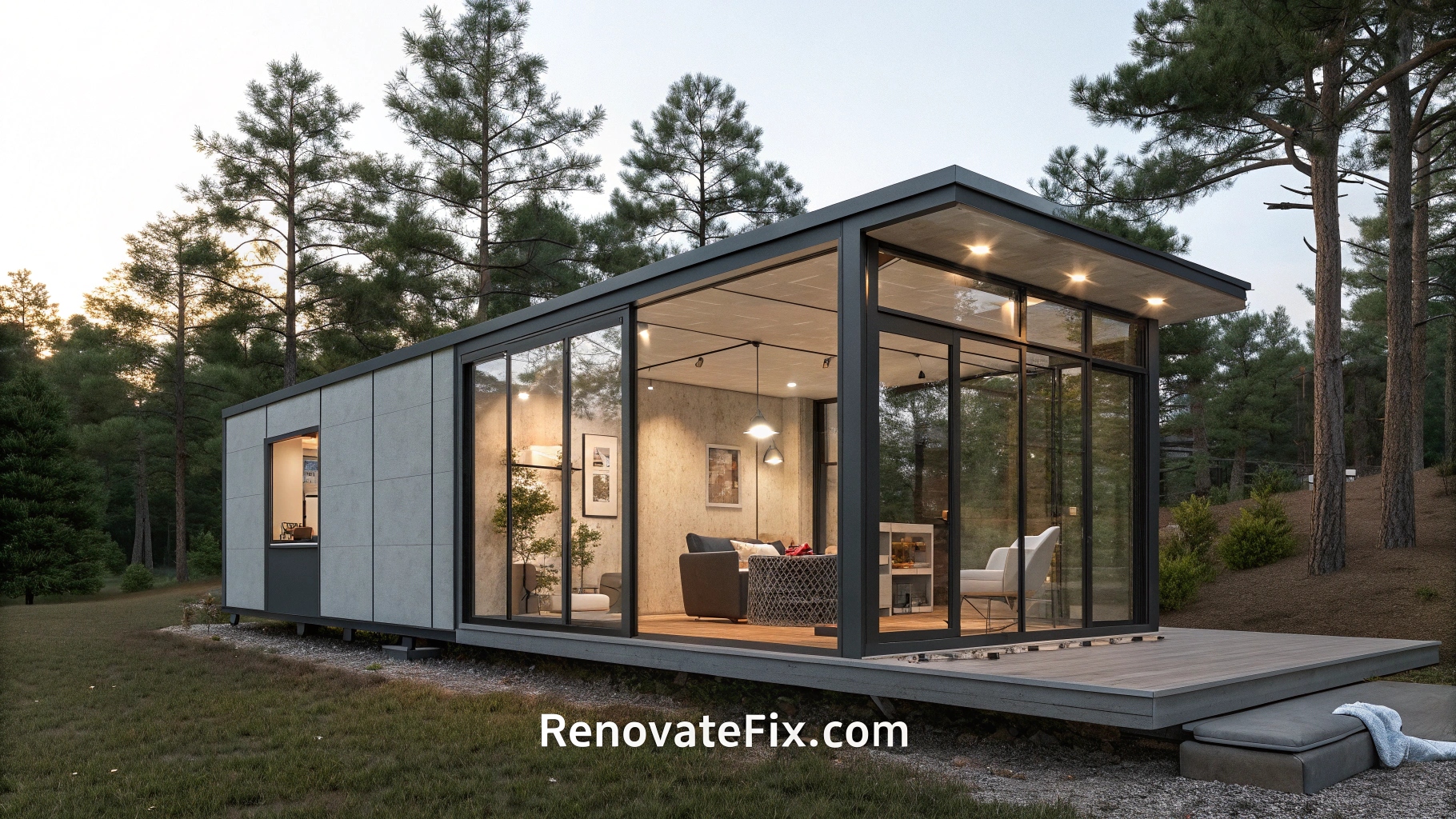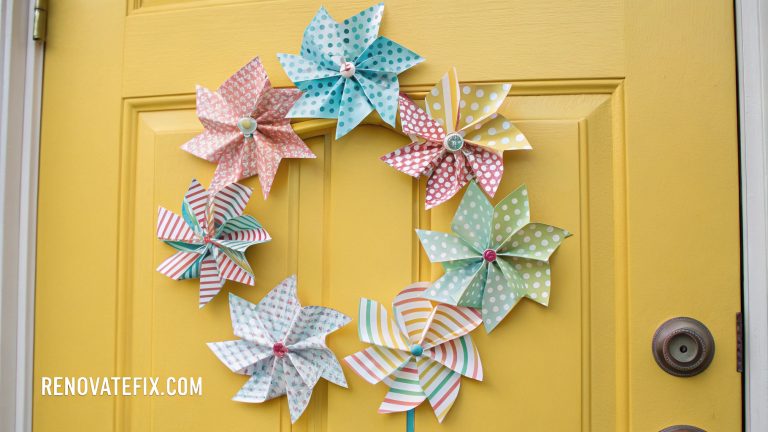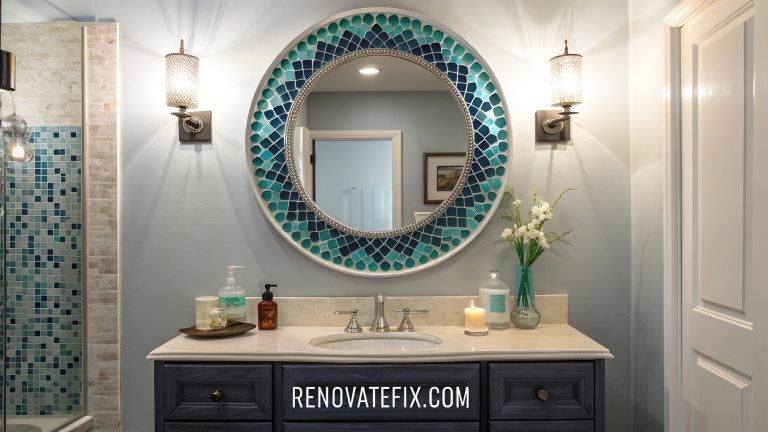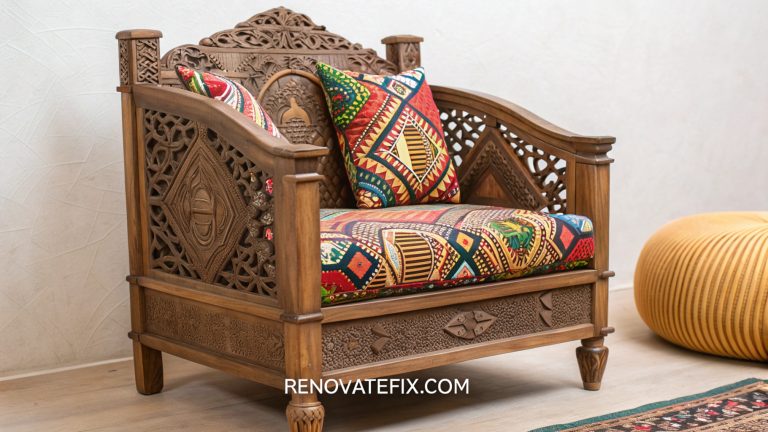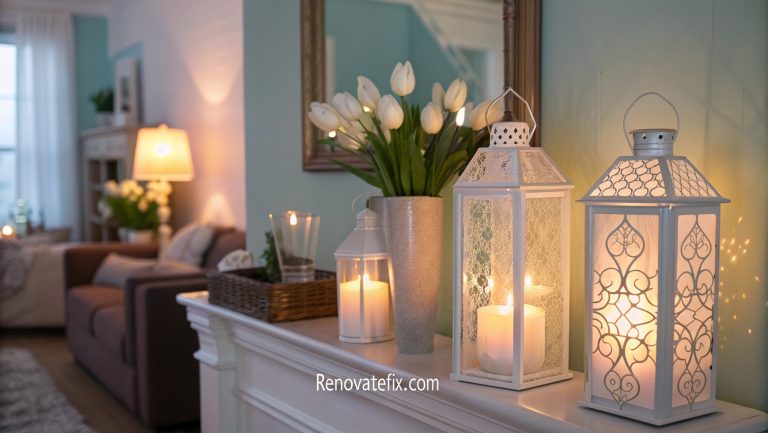15 Tiny House Plans Ideas for Maximizing Small Space Living
Embracing a minimalist lifestyle through tiny house living has gained tremendous popularity among those seeking financial freedom, environmental sustainability, and simplified living.
These compact dwellings challenge conventional housing norms while offering innovative solutions for comfortable living in reduced square footage.
Whether you’re dreaming of a mobile adventure home, a permanent backyard dwelling, or simply fascinated by clever spatial design, exploring various tiny house plans can spark inspiration for your own small-space project.
This comprehensive guide presents fifteen distinctive tiny house concepts that demonstrate how thoughtful architecture and smart design choices can create functional, beautiful homes in minimal square footage.
1. A-Frame Alpine Retreat
A steeply pitched roof characterizes this classic triangular structure, maximizing vertical space while minimizing building materials and construction complexity.
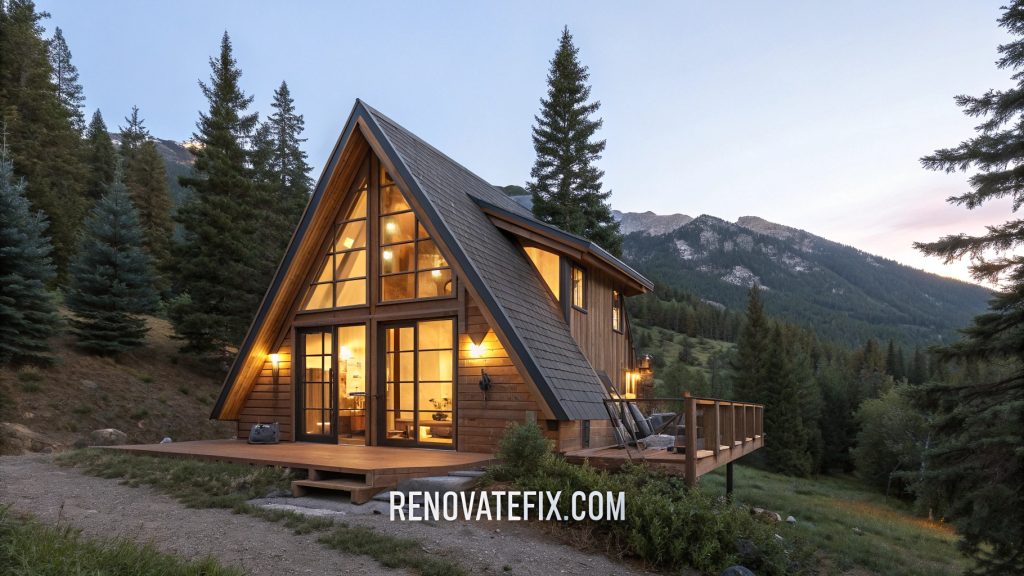
Natural light floods through front-facing windows, creating an open, airy atmosphere despite compact dimensions.
Wood-focused interiors with built-in storage solutions under stairs and behind walls utilize every available inch without sacrificing aesthetic appeal.
Perfect for mountain settings or snowy regions where the distinctive roof shape naturally sheds precipitation.
2. Floating Aquatic Dwelling
Built atop a stable pontoon foundation, this water-based residence offers unparalleled connection to lakes, rivers, or coastal areas while maintaining all comforts of land homes.
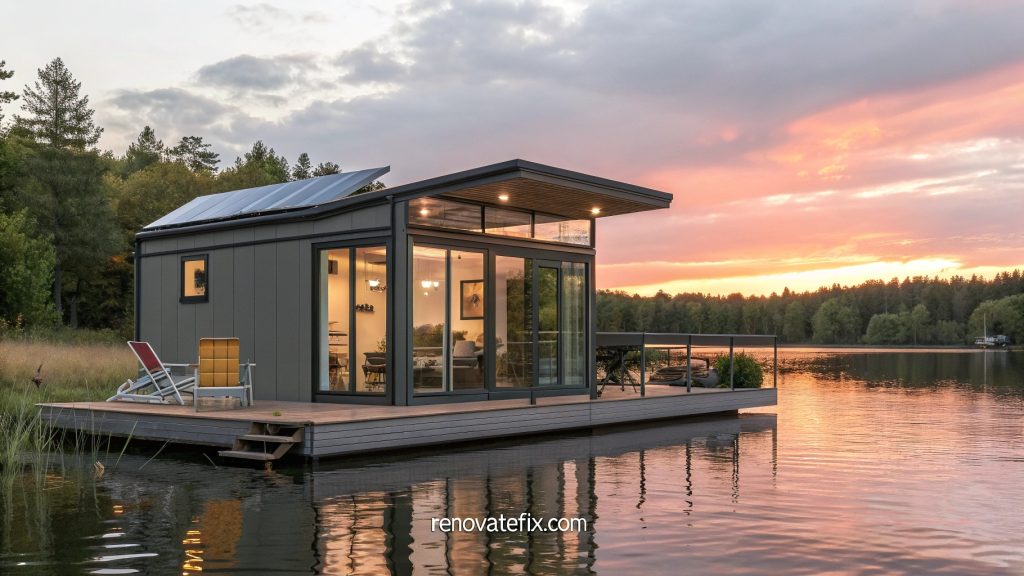
Panoramic windows wrap around living areas, blurring boundaries between interior spaces and surrounding waterscapes through stunning 360-degree views.
Solar panels and rainwater collection systems integrate sustainability features, allowing off-grid capability while reducing environmental impact.
Fold-down decks extend living space when anchored, providing perfect platforms for fishing, swimming, or simply enjoying sunrise coffee.
3. Underground Hobbit Haven
Partially built into hillsides or earth-bermed locations, this subterranean approach maintains steady interior temperatures year-round without extensive heating or cooling systems.
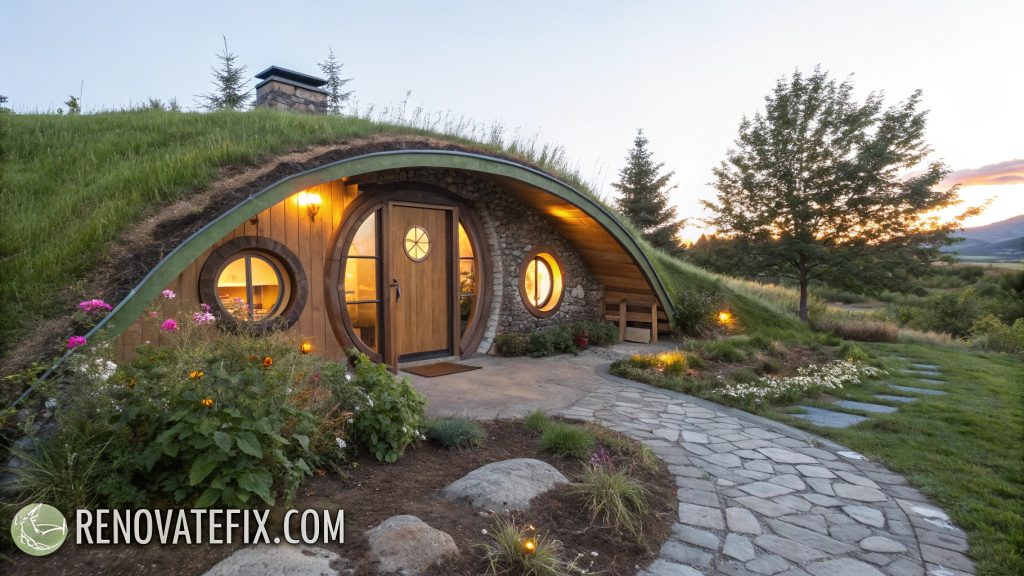
Round doorways and windows create whimsical curb appeal while practical benefits include superior weather resistance and natural insulation properties.
Living roofs planted with native vegetation blend seamlessly into landscapes while providing additional ecological benefits such as rainwater absorption and wildlife habitat.
Despite underground positioning, cleverly placed skylights and light wells ensure bright, welcoming interiors defying typical basement gloom.
4. Converted Shipping Container
Repurposed steel cargo containers form structural bones for this industrial-inspired dwelling, offering durability and weather resistance while reducing construction waste through creative reuse.

Floor-to-ceiling glass end walls introduce abundant natural illumination throughout narrow footprints, visually extending modest dimensions into surrounding landscapes.
Modular configurations allow single, double, or triple container arrangements depending on space requirements, creating customizable solutions for various family sizes.
Corrugated metal exteriors can retain industrial character or receive cladding modifications for different aesthetic preferences.
5. Vertical Micro Tower
Rising upward rather than outward, this multi-level approach maximizes limited foundation footprints through strategic vertical expansion across three or four compact floors.

Spiral staircases serve dual purposes as artistic focal points and space-saving circulation routes between distinct functional zones arranged vertically.
Rooftop terraces crown these tall, slender structures, providing outdoor living areas without expanding ground-level impact or sacrificing garden space.
Elevator options can substitute stairs for accessibility considerations when necessary without compromising efficient spatial planning concepts.
6. Rustic Cabin Miniature
Hand-hewn logs or reclaimed barn wood create authentic rustic charm throughout this traditional interpretation of compact living inspired by frontier heritage.
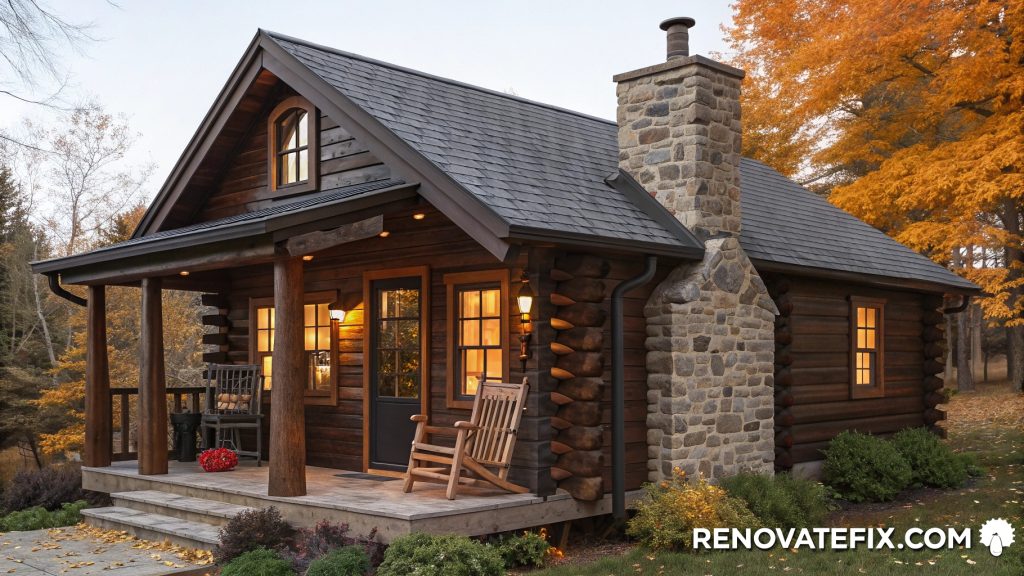
Stone fireplaces serve as heating sources and architectural anchors within modest floor plans, offering practical functionality alongside nostalgic aesthetic appeal.
Covered wraparound porches effectively double usable space during fair weather months, blurring indoor-outdoor boundaries through seemless transitions.
Raftered ceilings with exposed beams embrace classic cabin styling while creating perception of expanded interior volume above compact footprints.
7. Mobile Office Studio
Specifically configured for remote work capabilities, this productivity-focused floor plan prioritizes dedicated workspace zones alongside essential living functions.
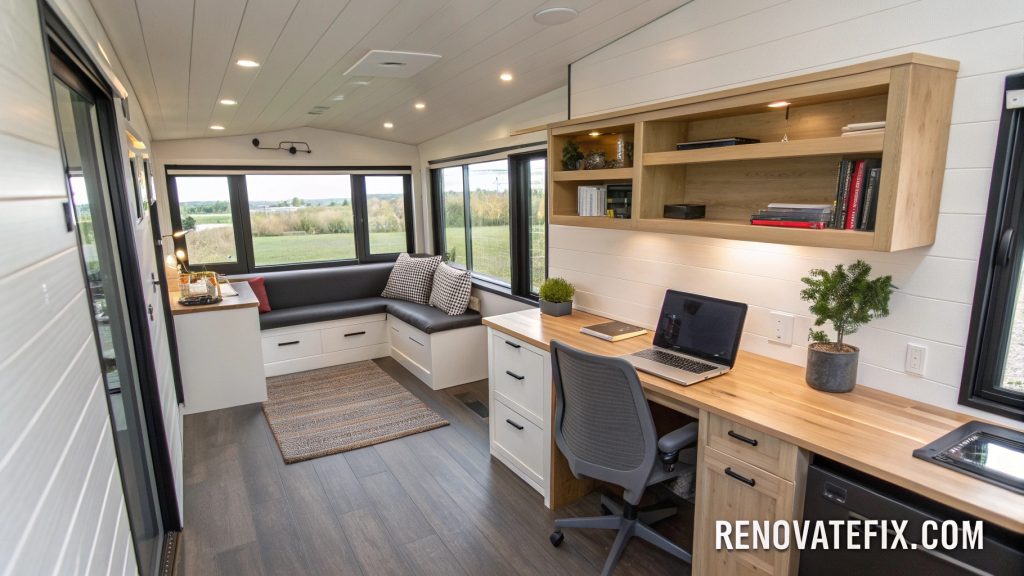
Built-in ergonomic desk systems anchor professional areas with custom storage solutions minimizing digital clutter through thoughtful cable management and equipment organization.
Soundproofing elements between work and relaxation zones maintain healthy boundaries between professional responsibilities and personal downtime within shared compact environments.
Expandable wall sections deploy during working hours, increasing interior dimensions when productivity needs priority, then retract for efficient travel configuration.
8. Glass House Pavilion
Minimalist architectural approach employing glass walls throughout most exterior surfaces creates extraordinary transparency between indoor spaces and natural surroundings.
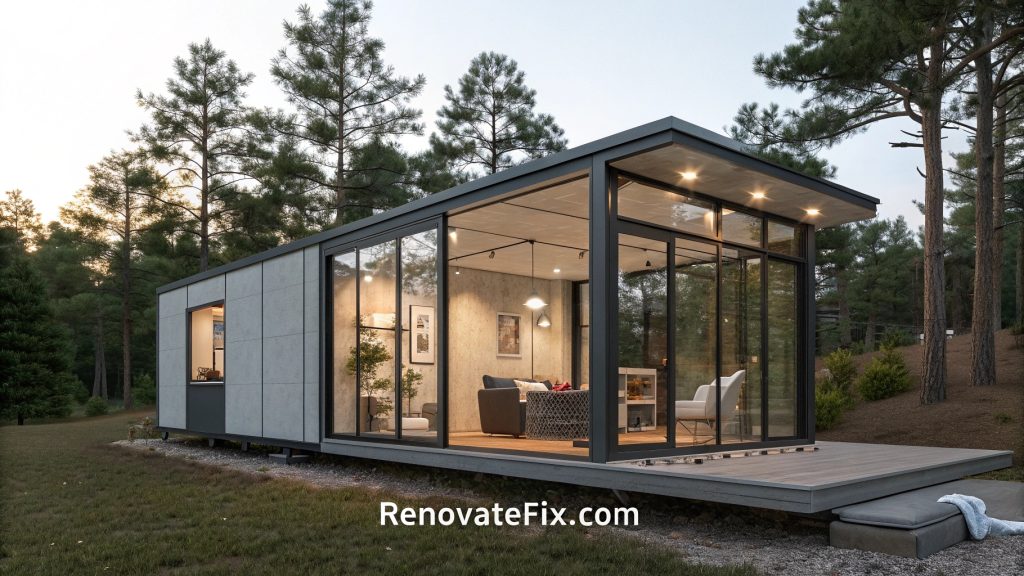
Privacy solutions through strategic frosted panels or removable screens allow adaptability without compromising overall conceptual openness or abundant natural illumination.
Climate control challenges receive innovative solutions through specialized glazing technologies, automated shading systems, and passive ventilation strategies maintaining comfort across seasons.
Structural elements reduced to essential framework create floating roof effect above virtually invisible walls, emphasizing boundary dissolution between built environment and nature.
9. Modular Expandable Kit
Factory-built core modules arrive ready for immediate occupancy while allowing future expansion through additional components as family needs evolve or budgets permit.
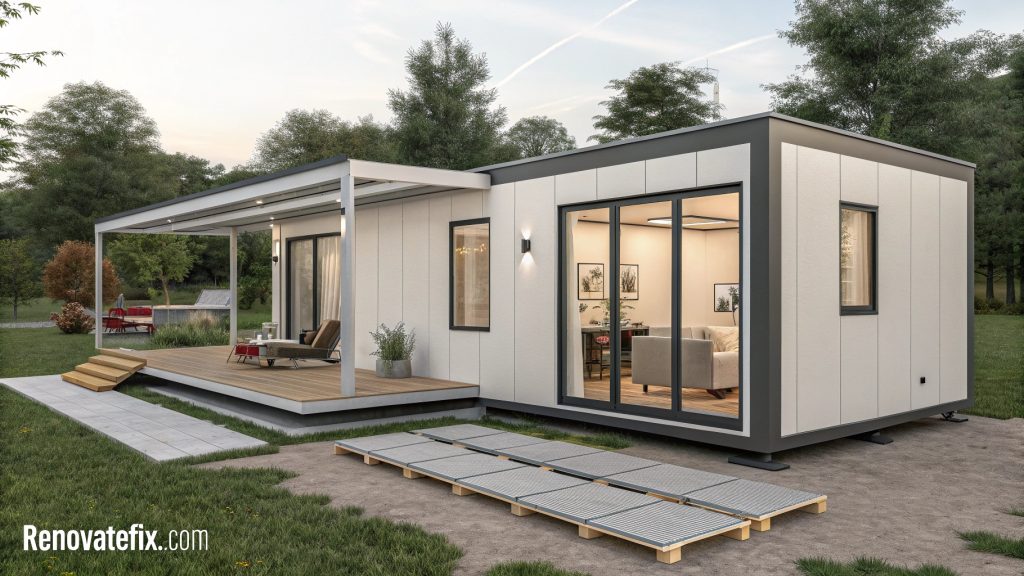
Standardized connection points between segments ensure structural integrity throughout phased growth without requiring complete rebuilds or extensive modifications.
Puzzle-like assembly systems enable DIY-friendly construction processes requiring minimal specialized tools or professional assistance beyond foundation preparation.
Uniform aesthetic maintained across expansion phases through consistent material palettes and architectural languages regardless of construction timeline.
10. Gothic-Inspired Mini Cathedral
Soaring pitched ceilings with dramatic roof angles create extraordinary vertical volume despite minimal floor area, establishing grand spatial experiences within modest footprints.
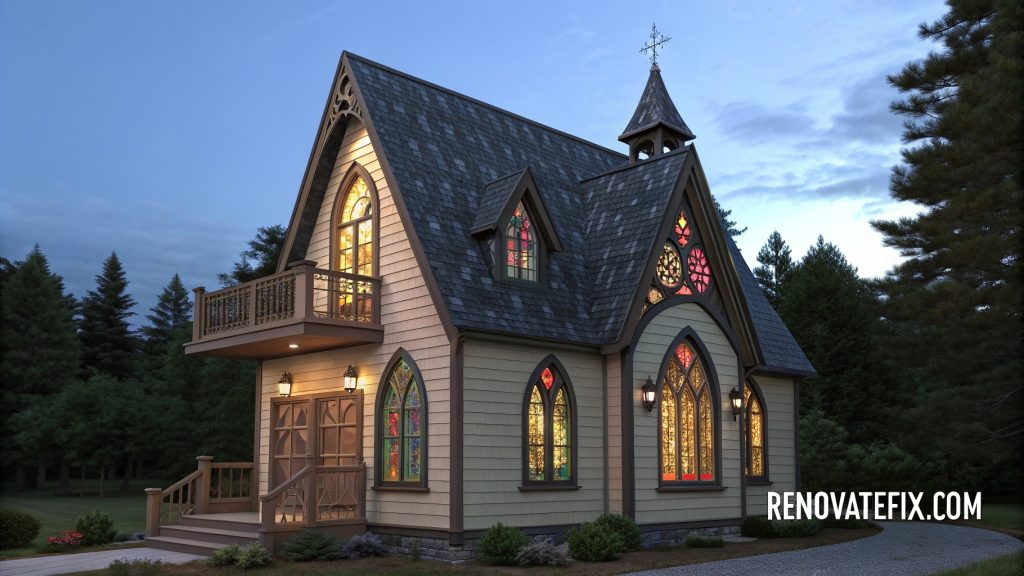
Elongated windows featuring arched tops draw inspiration from religious architecture while flooding interiors with patterned light through colored glass accents or geometric muntins.
Loft sleeping quarters float within impressive ceiling heights, accessed via decorative ladder systems doubling as artistic installations when not serving practical functions.
Ornamental exterior trim details and finial elements bring distinctive character through architectural nods to historical precedents reinterpreted for contemporary micro-housing applications.
11. Desert Southwest Adobe
Thick earthen walls provide exceptional thermal mass moderating temperature fluctuations especially beneficial in harsh desert climates with extreme day-night variations.
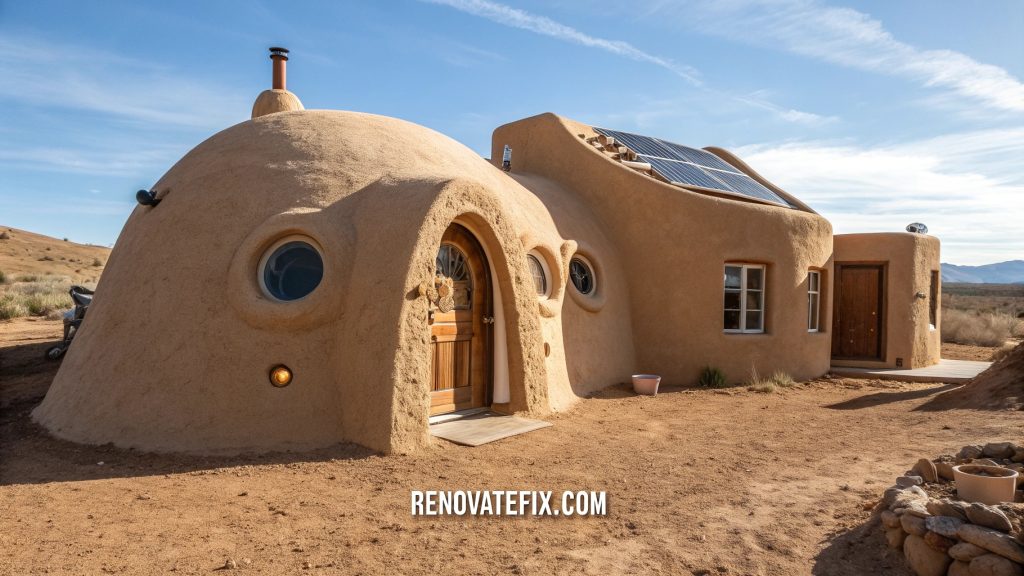
Rounded corners and organic forms throughout construction reference traditional pueblo building practices while creating distinctive visual character differentiating from conventional rectilinear approaches.
Passive cooling strategies including strategically positioned clerestory windows establish natural ventilation currents eliminating mechanical system requirements during moderate seasons.
Exterior niches and built-in benches extend functional space around perimeters while maintaining coherent architectural language across indoor-outdoor boundaries.
12. Circular Yurt Adaptation
Perfect geometric circles establish efficient spatial organization within continuous curved exterior walls, eliminating wasted corner spaces common in rectangular floor plans.

Central ceiling domes draw eyes upward while introducing zenithal light through oculus openings, creating dramatic daily sunbeam patterns across interior surfaces.
Radiating partition walls divide functional zones like pie segments when privacy needs arise while maintaining option for completely open configurations during social gatherings.
Superior structural efficiency handles snow loads or wind forces with minimal material requirements compared to conventional rectilinear construction methods.
13. Urban Rooftop Microhome
Purpose-designed for existing building placement, lightweight construction methods minimize structural impact on supporting rooftops while creating valuable additional living space in dense urban environments.

Perimeter planters integrate urban agriculture opportunities alongside dwelling functions, providing fresh produce access despite metropolitan setting limitations.
Rainwater harvesting systems collect precipitation for irrigation needs, reducing burden on municipal infrastructure while supporting self-sufficiency aspirations.
Elevated positioning captures unique cityscape views unavailable at street level, transforming previously underutilized urban surfaces into prime real estate opportunities.
14. Treetop Canopy Nest
Elevated platforms suspend compact living quarters among mature trees, minimizing ground-level environmental impact while creating unique arboreal experiences through intimate forest canopy proximity.
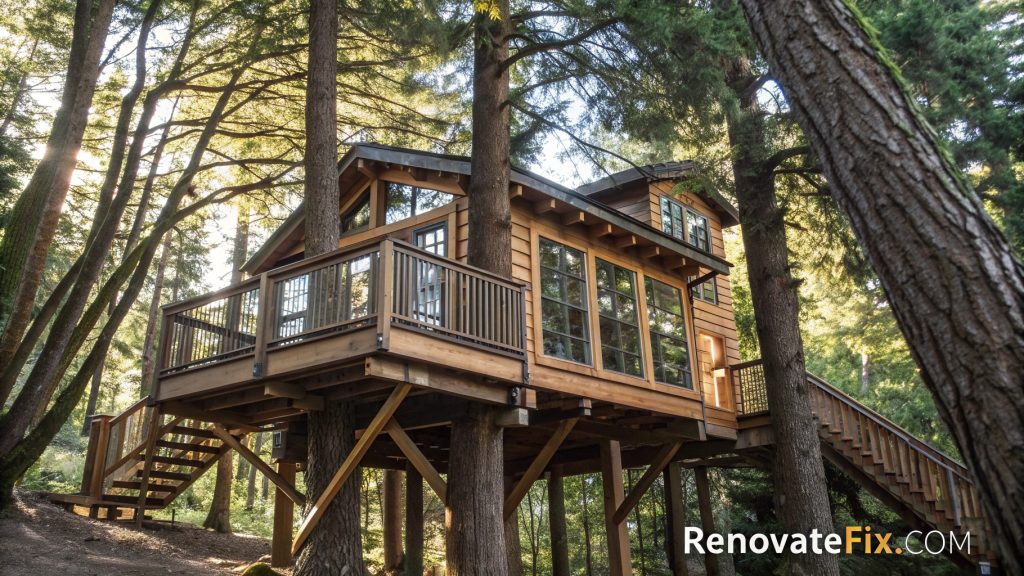
Multiple access options including spiral staircases, ship ladders, or rope bridges create adventurous arrival experiences enhancing distinctive character beyond mere functional necessity.
Branch-inspired structural supports blur distinctions between architectural elements and surrounding natural features through biomimetic design approaches.
Floor-to-ceiling windows positioned strategically at wildlife observation points create unprecedented opportunities for birdwatching or enjoying unique perspectives of forest ecosystems.
15. Nomadic Shepherd Wagon
Curved roof profiles featuring traditional shepherd wagon silhouettes combine nostalgic aesthetic with practical rainwater shedding functionality regardless of parking orientation.
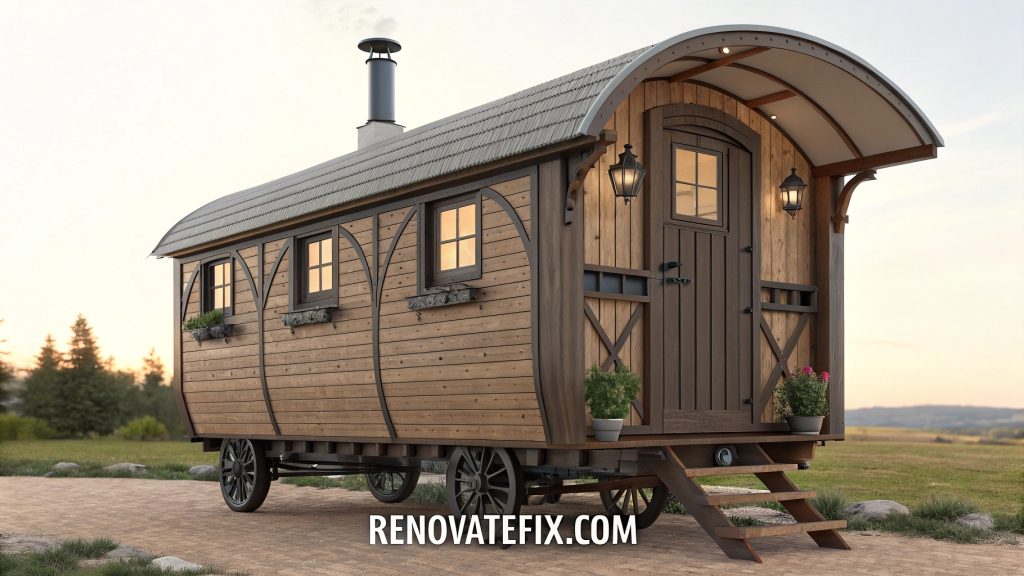
Wheel-mounted foundations provide genuine mobility options beyond mere aesthetic pretense, enabling seasonal relocation following optimal climate patterns or employment opportunities.
Compact cast iron stoves deliver efficient heating capabilities within minimal floor space allocation while establishing romantic focal points for interior arrangements.
Fold-down exterior elements including steps, awnings, and cooking stations deploy rapidly at destination, expanding functional space beyond limited interior dimensions during stationary periods.
Conclusion
The remarkable diversity among these fifteen tiny house plans demonstrates how limited square footage need never limit creativity, functionality, or comfort.
Each concept showcases unique approaches to maximizing available space while addressing different lifestyle priorities, aesthetic preferences, and practical considerations.
Whether permanent or mobile, traditional or avant-garde, these small dwelling designs prove that thoughtful architecture can create extraordinary living experiences regardless of size constraints.
As housing costs continue rising and environmental consciousness grows, these innovative tiny home concepts offer compelling alternatives to conventional housing paradigms.
By embracing efficient design principles and questioning assumptions about necessary space, tiny houses represent not just smaller homes but potentially more meaningful, intentional ways of living.
